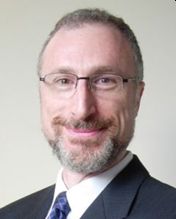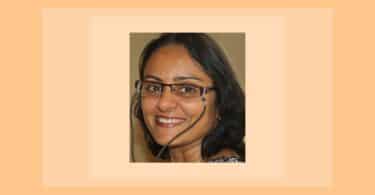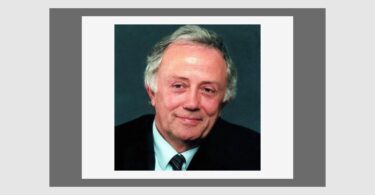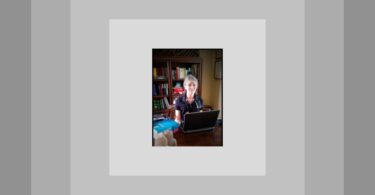Dr Gabriel Blass BSc, MB ChB, RSHom has been in practice in Glasgow, prescribing solely homeopathic remedies, since 1998. He has a keen interest in Medical Astrology and has run numerous seminars on the subject for the last 14 years. He is skilled in numerous approaches to homeopathy and has also developed expertise in muscle testing as a confirmative method.

A.S. You took a course in homeopathy while in medical school. What impressed you that inspired you to practice homeopathy?
G.B. As a medical student, by the third year, I came to the conclusion that most of the teaching I would receive would concern ONLY the physical level. As far as addressing that level was concerned, the material was good. However, based purely on my short experience of life up to that point, intuitively I knew that they were missing a trick, because apart from a hint in psychiatry, the huge impact that emotions have on health and disease wasn’t being acknowledged nor addressed.
I felt that I would have to learn this for myself. So, on top of the regular course material, I started taking additional courses and workshops, for example in therapeutic massage, tai chi, meditation, etc., in an attempt to acquire a broader depth of understanding.
It was in the third year of Medicine, when we were tasked to write an in-depth essay on any medical subject of our choice, that I decided to make mine on “Alternative medicine”. I looked into Chinese medicine, acupuncture, osteopathy, herbalism, and homeopathy. This was my opportunity to look at a variety of healing modalities which were different from the conventional model, and expand my perspective on how the subject of illness and healing could be addressed.
I was vaguely aware that there was a Homeopathic Hospital in Glasgow, so in order to make my essay more substantial, I contacted them to see if I could do a research project. Dr David Reilly was in charge at the time, and I proposed to do a survey of 100 consecutive patients attending the Out Patient Department to assess their satisfaction with their treatment.
I was amazed to discover that 75% of patients were very pleased with this approach, and was convinced that there was merit to this discipline. The medical course was very arduous, so I had to put any extra studying aside at this point.
I decided to add another two years to my university education by doing an intercalated BSc Honours degree in Pathology, in the hope of gaining a deeper insight into the causes of disease. It was at the time when molecular biology was the hot topic and rapidly expanding, and that was what the professors were keen to promote. I learnt a lot about the molecular mechanisms of disease and cellular function, but yet again, my questions weren’t really addressed.
In between my 3rd and 4th years, we were expected to do a summer placement to gain more experience. Although it was expected that this should be in conventional medicine, I managed to convince my faculty that there was some merit to sitting in at a clinic in Bombay and learn about Ayurveda.
This visit led to a quantum expansion in perspective once again. Knowing that a third of India was using an entirely different medical model now made it easy for me to realise that conventional medicine wasn’t the ONLY way.
Between my 4th and 5th years, I was doing a placement in general practice in Stranraer. One day, the GP just happened to be looking at his email (synchronicity) and crumpled a letter and tossed it into the bin. He muttered something about this silly course on homeopathy.
I retrieved it from the bin. The Faculty of Homeopathy were offering a 5-weekend introduction to the subject. And so it was that I became the first medical student to this postgraduate course. My love affair with homeopathy started then, in 1987.
A.S. You’ve been using medical astrology and have taught it for 14 years. What dimension does that add to a medical practice?
G.B. In 1986, when I came back from India, I happened to meet (synchronicity again) an herbalist called Jane Ridder-Patrick at an alternative medicine exhibition, who was keen to discuss the differences between eastern and western herbalism.
She was an astrologer too, but I didn’t hold that against her. For me, at that time, astrology was, like for most people, a silly pastime that you read in the newspaper, whereby for example, a twelfth of the population will meet a tall handsome stranger on Wednesday night.
So I met up with Jane. She calculated my proper natal chart and began to interpret it for me. I almost fell off my seat with the precision and accuracy in the way she described my personality. I immediately understood that what appeared in the newspapers was a parody of this discipline, and I knew that if this applied to the psychological side, it would apply to the physiology and pathology of the body too, as there is no separation between mind and body.
We became friends, and I started learning astrology. She was writing a book on medical astrology at the time, and I became her unofficial advisor, reading each chapter and playing devils’ advocate with arguments from the conventional perspective, in order to strengthen both our understandings of the subject.
Taking on board the concept that the planetary positions at the time of your birth will describe the NATURE of the subsequent life experiences at emotional and physical levels was utterly mind-blowing for me. It threw into question my understanding on how things work.
There is as yet no satisfactory mechanism to help us understand HOW Astrology works, but this is not a valid argument not to use it. The same argument applies to homeopathy. My rationalisation of the facts is based on synchronicity. Perhaps the planets don’t DO anything, but their movements are is some way synchronous with events on earth, like some gigantic cosmic clock.
Accepting that this may be the case, then brings forth the perennial question of free will versus fate. I have no intention of resolving this perennial conundrum in one sentence, except to say that what tools you have available perhaps was set at birth, but how you choose to use these tools is a decision that you make each and every day.
The chart is a blue-print, unique to each individual, showing the positions of the planets of our solar system (including Sun and Moon, which although not planets, are considered together with the rest) for the exact moment of your first breath.
The practical implications are mind-blowing. The Sun is widely accepted as giving an indication of the level of vitality or vigour of the person, ie. it translates as the quality of “the vital force”. The Moon has to do with emotions, fluids, and monthly cycles. Just like the Sun defines the quality of the vital force, the Moon defines the flow of the vital force.
Let me give you an example. The effect of a hampered Sun can be seen clearly in cases of myalgic encephalomyelitis/chronic fatigue/post-viral fatigue syndrome. I almost always find hard aspects between the Sun and Neptune in the charts of patients who have a florid case of this condition.
One of the negative effects of Neptune is to dissipate the vigour of the Sun. There is a leakage in vitality, which results in the person being easily drained of energy. This type of person tends to have a lack of boundaries. The boundaries become porous both ways. This means that on the one hand the universe floods into them, and they become oversensitive, losing energy by over-identifying with the problems of others.
On the other hand, they flood outwards, and are prone to over-extend, often due to a lack of clarity about their own limitations, and are compelled to do things for others which are not in their best interest, out of a feeling of guilt, idealism or self-sacrifice. This describes the classic Carcinosin picture, as many readers will recognise, which also happens to be a very useful remedy for the condition.
Try it for yourself. Grab the date of birth of a patient with severe CFS. Nowadays it is easy to calculate a basic chart online. You don’t even have to have an accurate time of birth for looking at this specific aspect – the date of birth will do (it won’t be the complete chart because the time of birth and location are necessary to set up an accurate chart).
Look to see if there is a hard aspect (an angular relationship, typically 0, 45, 90, 150 or 180 degrees) between Sun and Neptune. There usually is. I would hazard a guess that it would be statistically significant too, if anyone had the inclination and time to run the study with controls.
It appears that planetary energies MUST manifest in the life of the person. That seems to be a law. This gives one a good indication of what the challenges may be for a person during their lifetime. However, it doesn’t have to manifest necessarily as disease. The chart just describes tendencies.
Using awareness and wisdom, the manifestations may be very creative and life-affirming. It is only when the energies of the vital force don’t flow well, that disease results. By the same token, if there is disease, and you implement an adjustment of the energies by the use of a resonant remedy, then the disease is resolved. As homeopaths we do this on a daily basis.
As you can see, there is nothing “fated” about this. However, for cases that are stuck, I find the insights that the chart gives me are invaluable. It is also very helpful to assess the kind of miasmatic challenges a person may have. This is usually conveyed by aspects between the personal planets to the outer planets, whose energies are more transpersonal and demanding, as would be expected from the pattern and acquisition of a miasm.
The fact that the natal chart describes the energetic pattern of a person, has a corollary in terms of consciousness. To use an analogy, it shows how the pure white light of consciousness is coloured by the person’s particular filter. This in turn describes the kinds of experiences the person has, and how their personal notion of “reality” is formed.
In terms of homeopathy, this leads to people resonating to a greater or lesser extent with particular remedies or particular conditions, which can become their “favourites” or their specialty. We have all heard of particular homeopaths prescribing “rare” remedies (which we personally may hardly ever use) repeatedly and successfully, be it actinides, birds, gems, imponderables, matridonals or whatever. Each one of us has our particular “blind spots” and also our particular “focus”.
It is true that only by expanding our awareness we can overcome our prescribing biases. Nevertheless, there is also something curious going on here, because even if we assiduously study all the remedy families we can, and we remind ourselves to be are aware of them, we still end up prescribing in particular ways. Why does this happen?
Are we attracting particular types of clients, are we more aware of particular types of remedies, or do we stubbornly stick to particular biases in our analysis of cases? Whichever mechanism is involved, we end up having a particular colour to our experience of reality, and this is conveniently described in the natal chart. There is also something beautiful about it, in that each homeopath, when functioning with their fullest awareness, can contribute something unique to the whole homeopathic tapestry.
AS: I think the word holistic describes your practice in the deepest sense of the word. You’re striving to see how all things are connected and manifest that awareness in your practice. Your approach is so far from the mechanistic mindset of allopathy, that I wonder how you bridge that gap when giving presentations to allopaths.
G.B. When giving presentations to allopaths, I bear in mind that we have a shared purpose. That means that we start from a position of common ground. I like to start off with a cured case, preferably a video case, with the before and after scenarios, in order to make it more real.
The more difficult the case is to treat allopathically, the better. Once I have their attention, and have earned a degree of credibility, only then would I attempt to offer other perspectives for consideration, as people can feel very threatened when their underlying assumptions are shaken up.
A.S. If those allopaths were to ask, how might you explain to them that a human could resonate to a particular plant, mineral or animal?
G.B. Again, I would start from a position of common ground. I would explain that each remedy picture has been very objectively delineated by provings, and I would introduce the idea that like cures like, that the remedies work through a process of resonance. Historically we have a number of remedies, the polychrests, that cover the major archetypes and challenges of the human condition. At an introductory level to the subject, that usually would be enough.
If I wanted to explain it in more depth, I would say that due to the fact that we share common biological mechanisms with our ancestors, and that there are many ways in which our systems can go wrong, a particular individual may need a remedy made from any level of the animal kingdom, from unicellular organisms upwards.
It is said that we share 50% of our genes with the fruit fly. Whether this is accurate or not, I don’t know, but it attests to the fact that there are shared biological mechanisms which underpin our functioning. It is the same with embryonic development. In the womb, during gestation, we mimic the embryos of many different animals as we go through our processes of development.
The journey of animal evolution is inextricably linked in with viruses, bacteria, and fungi, so monera and fungi as remedies come in at this point too. We are just beginning to play around with this in scientific circles, given the current interest in the human biome. We homeopaths, of course, have been using bowel nosodes to great effect since Bach and Paterson started working on it in the 1920-30s.
Then we have other forms of healing intelligence, all conveniently packed in the plant kingdom. Plants have also followed their own particular evolutionary path, echoed not only in our own human evolution, but also echoing the earth’s planetary maturation, as Michal Yakir has very eloquently described.
In addition to that, we are all made of matter, or at least our bodies are. So we have at our service the whole of the mineral kingdom, again underpinned by the evolution of matter from the Big Bang onwards, as delineated so well by David Lilley. Lastly, the whole show runs on the radiations from our sun, so why not bring in the imponderables too?
This explanation can be too abstract or too involved for some, and there is nothing better than an example. I recall seeing a young child with very significant developmental delay due to an inborn error of metabolism. There are many ways in which one can approach that problem. We have at our disposal remedies from the mineral kingdom, such as Calcarea carbonica or Plumbum metallicum, which are very useful in these situations, or plant remedies such as Lycopodium.
However, in this instance, what was very unusual about the case was that the child had disproportionately long legs, and kept sticking out his tongue. This led me to the prescription of Bufo rana, to which he responded very well, and in addition to vitamin B12 injections, he quickly began to catch up with his developmental milestones.
I would like to make a very important point (and one which I wouldn’t dream of discussing in a presentation to allopaths). I don’t know how other practitioners feel, but for me each homeopathic prescription is full of uncertainty. A prescription is never a done deal until the person tells me by his/her feedback that it is the correct remedy.
There is such a breadth of remedies to choose from that it is easy to get lost in one system or another. Nowadays many new remedies are continually bubbling up to the surface of our consciousness at an exponential rate! You have a person in front of you. You can see a polychrest very clearly. But is it the correct remedy, or are you just identifying what is familiar to you with all your own prescribing biases?
The art of prescribing is fraught with difficulties. It is a process of pattern recognition. So, what information you use to elucidate a pattern is important. This in turn will depend on what you observe or what the patient tells you, which in turn depends on how you ask the question, which in turn depends on your own level of development and self-understanding, as it is difficult to understand and accept in others what you don’t understands and accept in yourself.
Then, once the information is obtained, how do we analyse it? What is the essence of the case? If there isn’t a clearly visible totality, what do we focus on? At what level do we zoom in? Do we focus on the physical or the mental/emotional? Is that split even valid? How do we find a match?
The materia medica can be useful, of course, but there is a lot of information that won’t help us differentiate between remedies, For example, every remedy at some stage in its picture will have anxiety or lack of heat, as those are common ways in which the body can malfunction when it is threatened or depleted.
What about the repertories? Many rubrics are woefully incomplete, and many potentially useful rubrics can’t be found in our repertories. We are as likely to be wrong-footed by repertorisation as we are to find the simillimum, assuming that the remedy we need is even listed in it!
We have to repertorize as best we can, if this is our chosen method in this case, and arrive at a conclusion. No wonder that if you are in a room with five homeopaths, there will be 10 possible remedies to chose from! Yet, despite all these pitfalls, the art of prescribing is learning to manage all these uncertainties, and eventually succeed in helping others, although as you can see, even with the best will in the world and the hardest endeavour on our part, we will never hit the mark 100% of the time. I find the whole process amazing.
A.S. Yes, there are so many variables that it’s amazing that we get it right as often as we do. We homeopaths need as many tools as we can master. There’s a tool which you’ve mastered that has made a difference in your practice, muscle testing.
G.B. In the last 200 years, not only has there been an exponential growth in the number of remedies, but also a profusion of new analytical techniques that still follow his principle of “like cures like”. There are so many ways to approach the case, be it using sensation, kingdoms, Compton-Burnett’s organ approach, looking at the subconscious a la Chhabra, Heiner Frei’s polarity analysis method, etc, to name but a few.
For example, Sankaran’s sensation method has enabled me to prescribe successfully remedies such as ardea herodia, oniscus asselus, tyto alba, even though they weren’t even listed in the repertory. Yet more times than not, it also led me down a blind alley, particularly in the days before encountering muscle testing.
With so many approaches, it is easy to go down the wrong path, and end up far away from the simillimum. I feel fortunate in having become aware of muscle testing. In a separate article, I describe how my thinking on the subject evolved. The method is based on the idea of asking the vital force directly for feedback on the choice of remedy using changes in muscle tone.
I’ve discovered that the simpler the question, the less likely one is to get a spurious answer due to confounding variables. The technique works best if you have the patient in front of you, (which has been more difficult to do during the pandemic), and have the remedies at hand as well (which is easier if you are a dispensing homeopath), so that you can simply let the patient hold the remedy while you do the evaluation.
I have found this method very useful as a final confirmation of my choice of remedy in most of my patients, but it is particularly noteworthy in the few patients with advanced cancers who weren’t offered (or refused) any conventional treatment like chemotherapy or radiotherapy due of the level of progression of the disease at the time of presentation.
In those patients, you don’t have much time to play with, but the vital force is still strong enough to give you a good signal, and also the response to the remedies is more marked as they haven’t been so depleted by previous treatments. The method is no panacea, but it has been an invaluable tool, and has kept me right on many occasions. I wonder what Samuel Hahnemann would have made of it?
A.S. I believe he would have explored it. Like you, he was open to the esoteric and left very few stones unturned. Thank you so much for sharing with us today!






Thanks for this interview. Dr. Blass is an exceptional physician, skilled, open minded, creative. How refreshing!